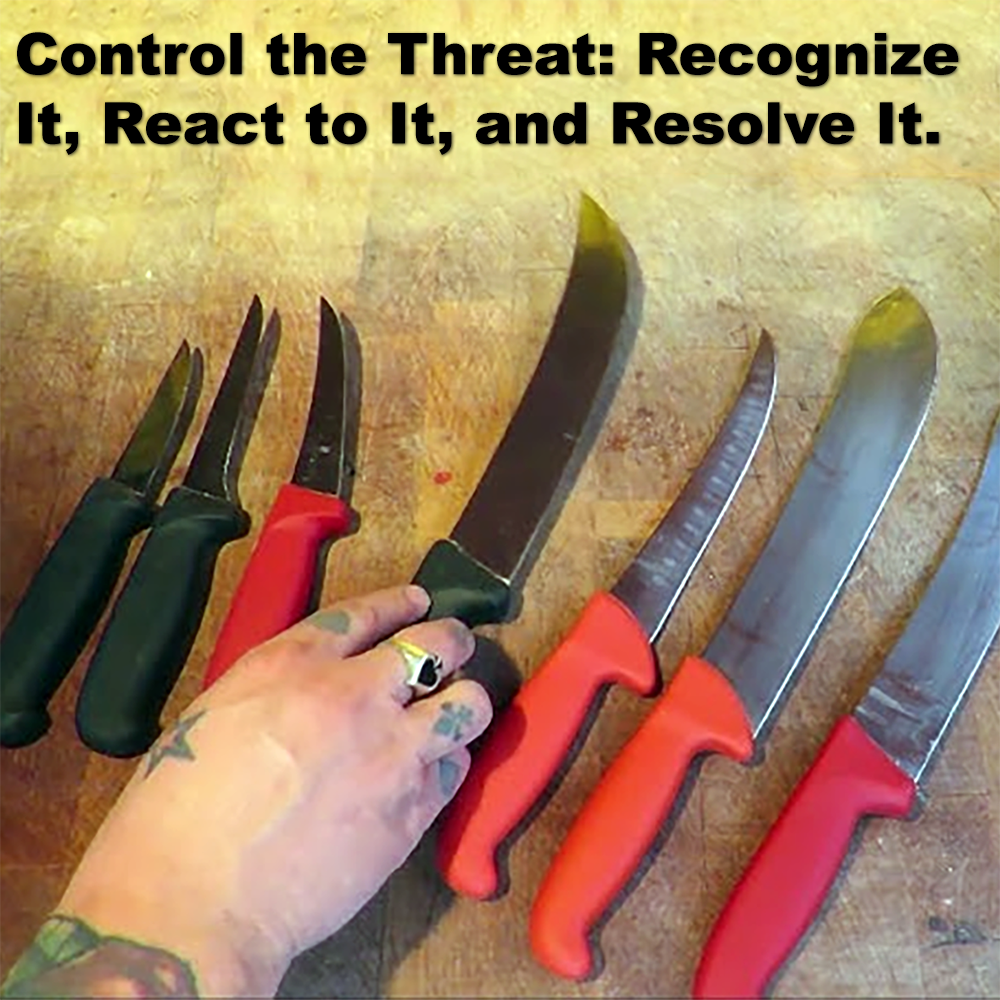
(Approx 2 minute 10 second read)
If you’re like most people, you probably hope you will never find yourself in a self-defense situation.
.
The very best defense starts with avoidance of the threat altogether. The sooner you sense it coming, the sooner you can step off the tracks and avoid the freight train altogether.
.
During my time working as an EMT, I was mostly partnered with someone who had no physical self-defense skills.
.
I remember one time (there were many), we were called to a person who was drunk and had multiple wounds to his head.
.
He wanted no help from us, but with assistance from the police, we managed to get him to his home where we could offer assistance. After checking him over, cleaning him up, and bandaging his wounds, he started to turn aggressive.
.
Both my crew-mate and I were concerned that he had a more serious head injury. However, he was adamant that he did not want to go to hospital.
.
Suddenly he got up and walked with purpose into his kitchen. As I was trying to convince him to come with us, both my crew-mate and I followed him – my crew-mate slightly ahead of me.
.
For some reason, my ‘spidey’ senses kicked in as I watched the ‘patient’ glance at, and move towards a selection of knives in a butcher’s block on the counter. My crew-mate was completely unaware of what was happening and continued talking to him.
.
I moved in front of my crew-mate and the patient, who had become even more aggressive, effectively positioning myself between him, and the butcher’s block.
.
Fortunately, we were able to calm the patient, successfully deescalate the situation and eventually he accompanied us to hospital.
.
In self-defense, your early options are just as important as engaging in a physical response. Training should include exploring ways to avoid or defuse potentially dangerous situations before they escalate. In this case, distance, body language, assertive verbal responses, and positioning were the appropriate and successful choices.
.
Self-defense is simply about stopping the threat. Once the threat stops, you’re done. It’s very important to make it clear who the aggressor is.
.
Fighting when it’s unnecessary – or when the situation could be resolved non-physically – is a mistake.
.
While those who consider self-defense as simply fighting, it is not, and this is why I write about context so much.
.
As a general rule, self-defense only justifies the use of force when responding to an immediate threat. The justification disappears once the threat ends.
.
Should I have used force in this instance just because I had a feeling? No – but that “feeling” wasn’t just instinct. Years of training helped me to recognize subtle signs of danger, even before others might have noticed them. This is why responsible preparation goes far beyond simply learning how to fight.
.
The emphasis is not upon winning in a combative situation, but upon escaping from danger. You must either control the threat, or the threat will control you.
.
Your physical safety is up to you, as it always has been. And often, staying safe doesn’t require fighting at all.
.
.
Written by Adam Carter – Shuri Dojo
